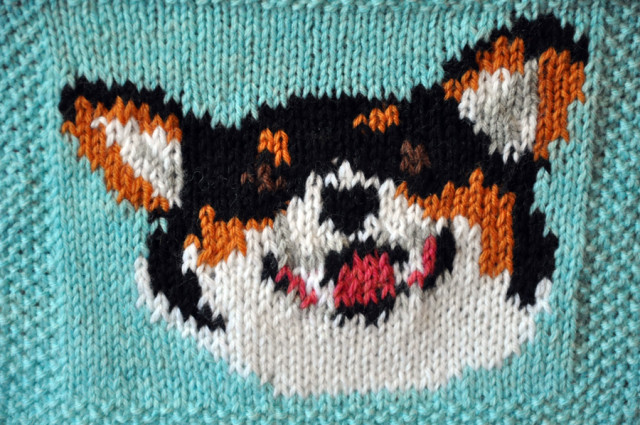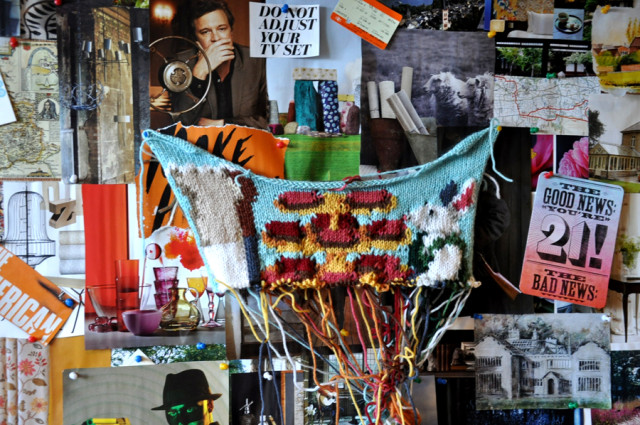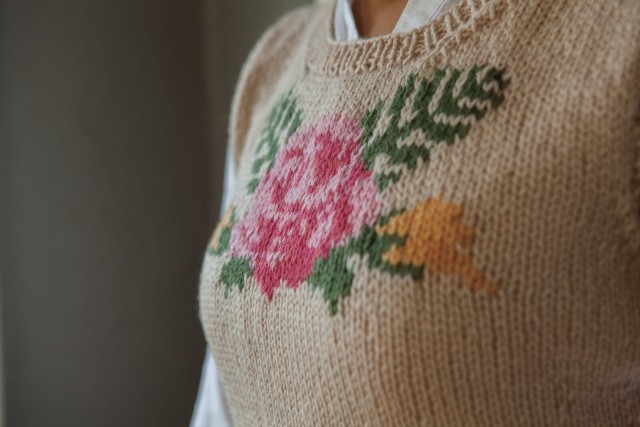
Intarsia is a colorwork technique for creating stand-alone blocks of color. Each block of color uses a separate little ball of yarn, and the different yarns are twisted together at every color change so the color blocks are interconnected. When working at a certain angles, the yarns don’t have to be twisted to be joined, but I find it easiest to twist every time I change colors. When working an intarsia square for example, if you didn’t twist the yarns at the color changes, you’d end up with large holes along the vertical edges of the square because you would have basically worked very long vertical buttonholes. By joining the different color sections with twists at the edges, you don’t have to carry any yarn along the backside, so intarsia ends up lighter weight and with fewer color-placement restrictions than stranded colorwork.

When you’re working intarsia, you need one little ball of yarn per color section, not per color. For example, if we were knitting a blue square on a white background, we’d need one ball of blue for the square, and two balls of white, one for each section of white on either side of the square. Many knitters like to use cardboard bobbins like for embroidery to wind off and manage their small balls of yarn because complex designs will require a lot of little balls, but I tend to leave things messy. Because you’re constantly switching balls of yarn, you end up with a lot of ends to weave in, but that’s okay because the finishing process will allow you to tidy up your work and make it look perfect. It’s entirely okay to have your intarsia look messy and ugly before you’ve woven in the ends, and it’s pretty normal.

To reduce the number of balls of yarn, a lot of knitters choose to combine intarsia with stranded and duplicate stitch techniques. There are a few downsides to doing this. Both stranded and duplicate stitch will add bulk to the section where you’re working it because there will be twice as much yarn. Combining stranded with intarsia techniques can run the risk of creating loose or holey intarsia because the yarn might not always end up in the right place to twist when you change colors, but it can be useful when doing a detailed multi-color section like the main rose on the Nosegay Vest.
Are there any aspects of intaria that you’d like to know more about?

Leave a Reply